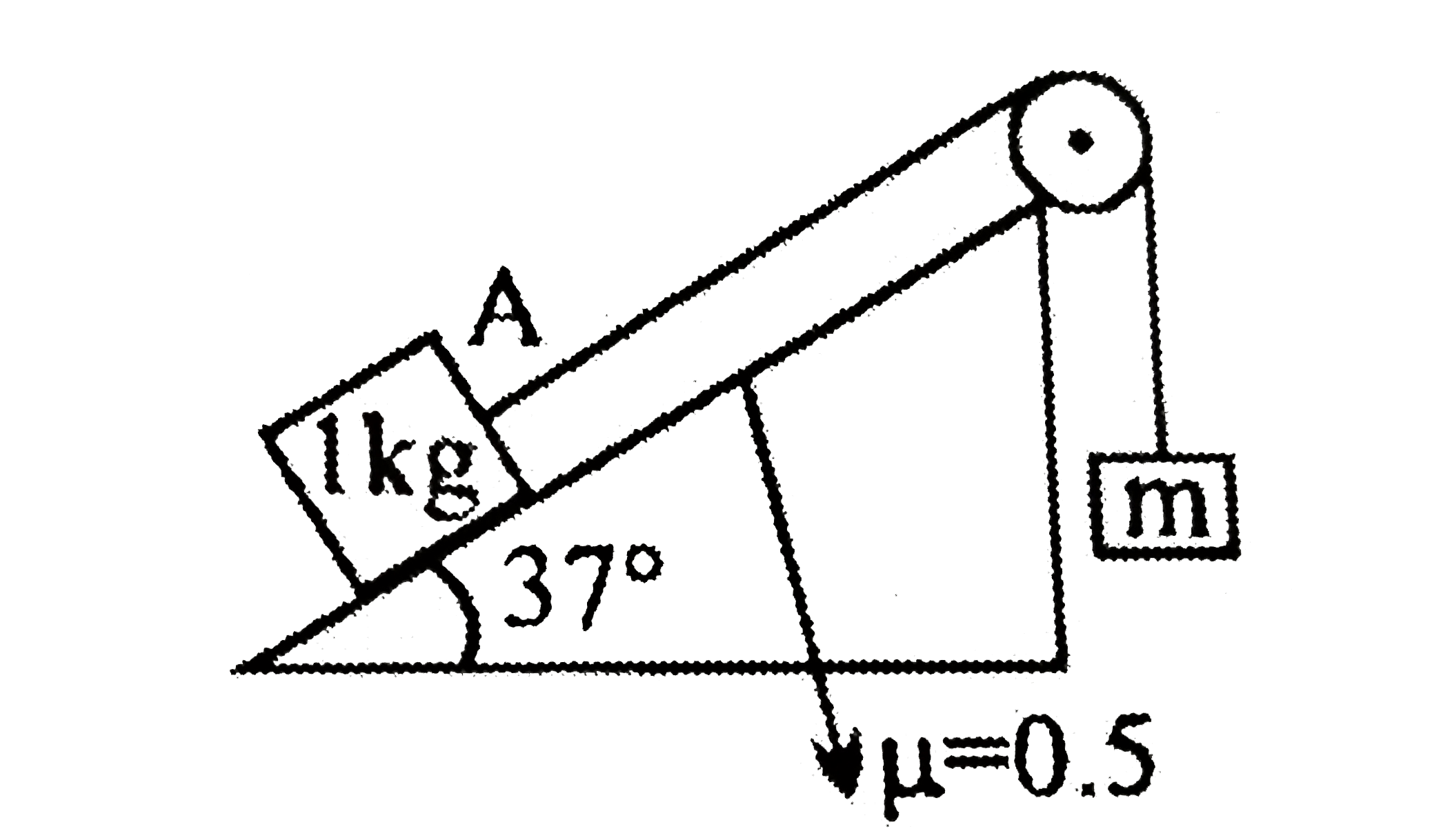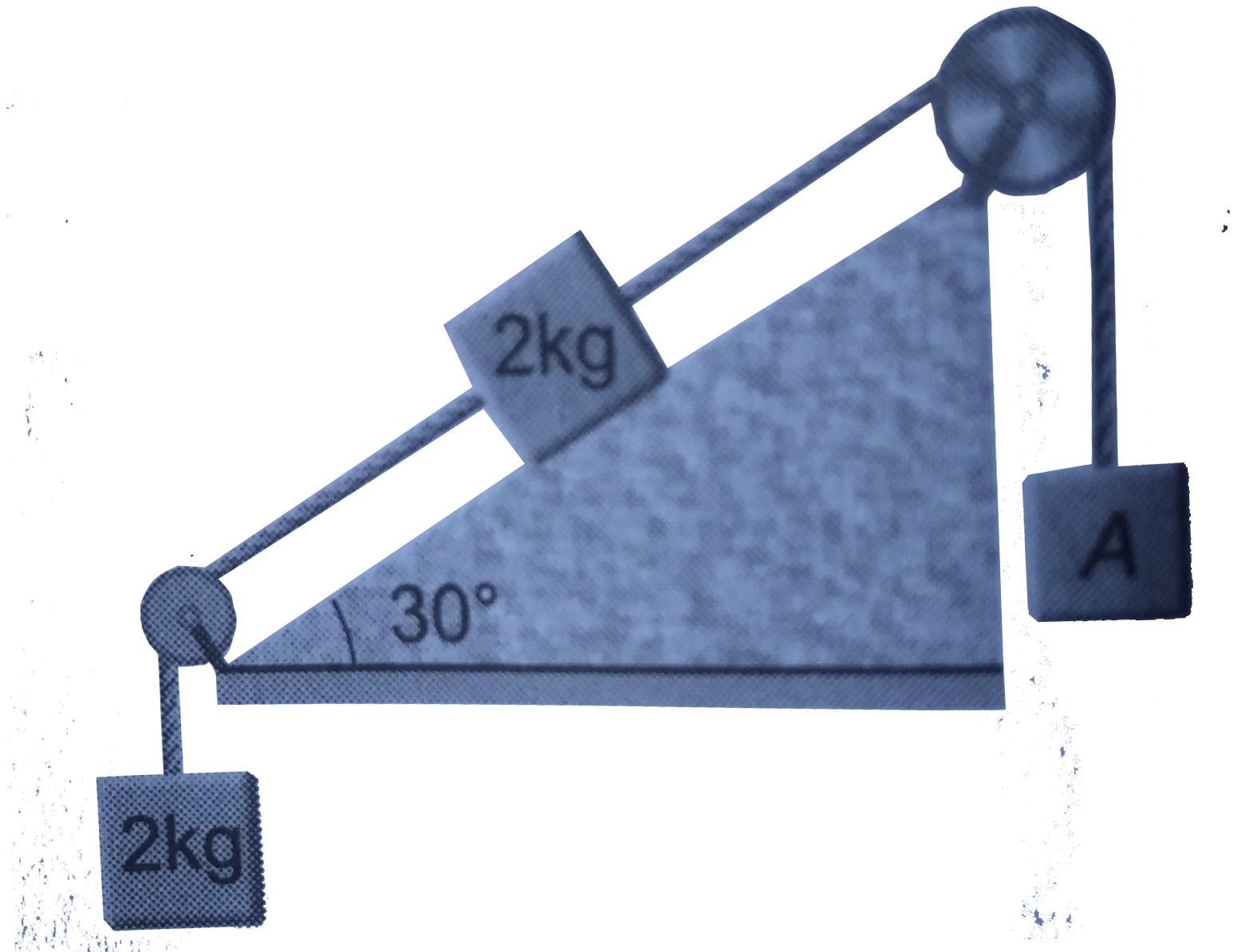In the figure, what should be mass m so that block A slide up with a constant velocity?

The correct Answer is:1 sec
arel=2(4−14+1)ˆj=12ms−2
l=6m
l=12arelt2
6=12×12×t2
t=1s
Topper's Solved these Questions
Similar Questions
Knowledge Check
In the block moves up with constant velocity v m//s. Find F
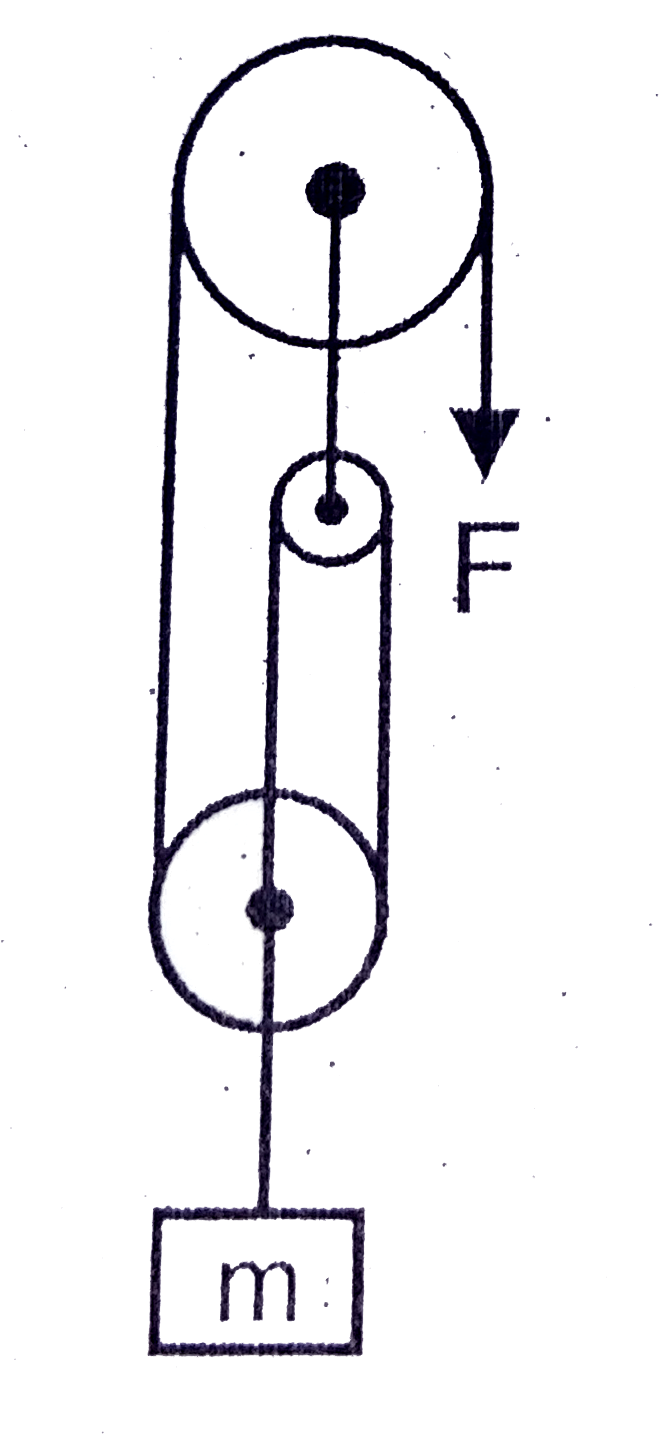 AF=mg2BF=2mg3CF=mg3DF=m3
AF=mg2BF=2mg3CF=mg3DF=m3Two block of masses M1 and, M2 are connected with a string which passed over a smooth pulley . The mass M1 is placed on a tough inclined plane as shown in figure .The coefficient of friction between and block and the inclined plane is μ what should be the minimum mass M2 so that the block M1 slides upwards?
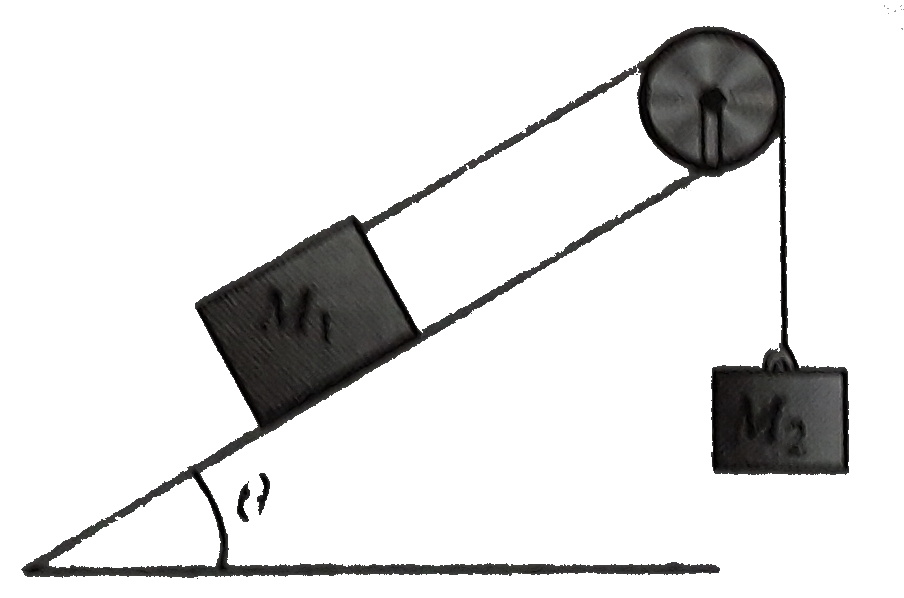 AM2=M1(sinθ+μcosθ)BM2=M1(sinθ−μcosθ)CM2=M1sinθ+μcosθDM2=M1sinθ−μcosθ
AM2=M1(sinθ+μcosθ)BM2=M1(sinθ−μcosθ)CM2=M1sinθ+μcosθDM2=M1sinθ−μcosθA block of mass m is kept on an inclined plane of a lift moving down with acceleration of 2m/s2 . What should be the coefficient of friction for the block to move down with constant velocity relative relative to lift?
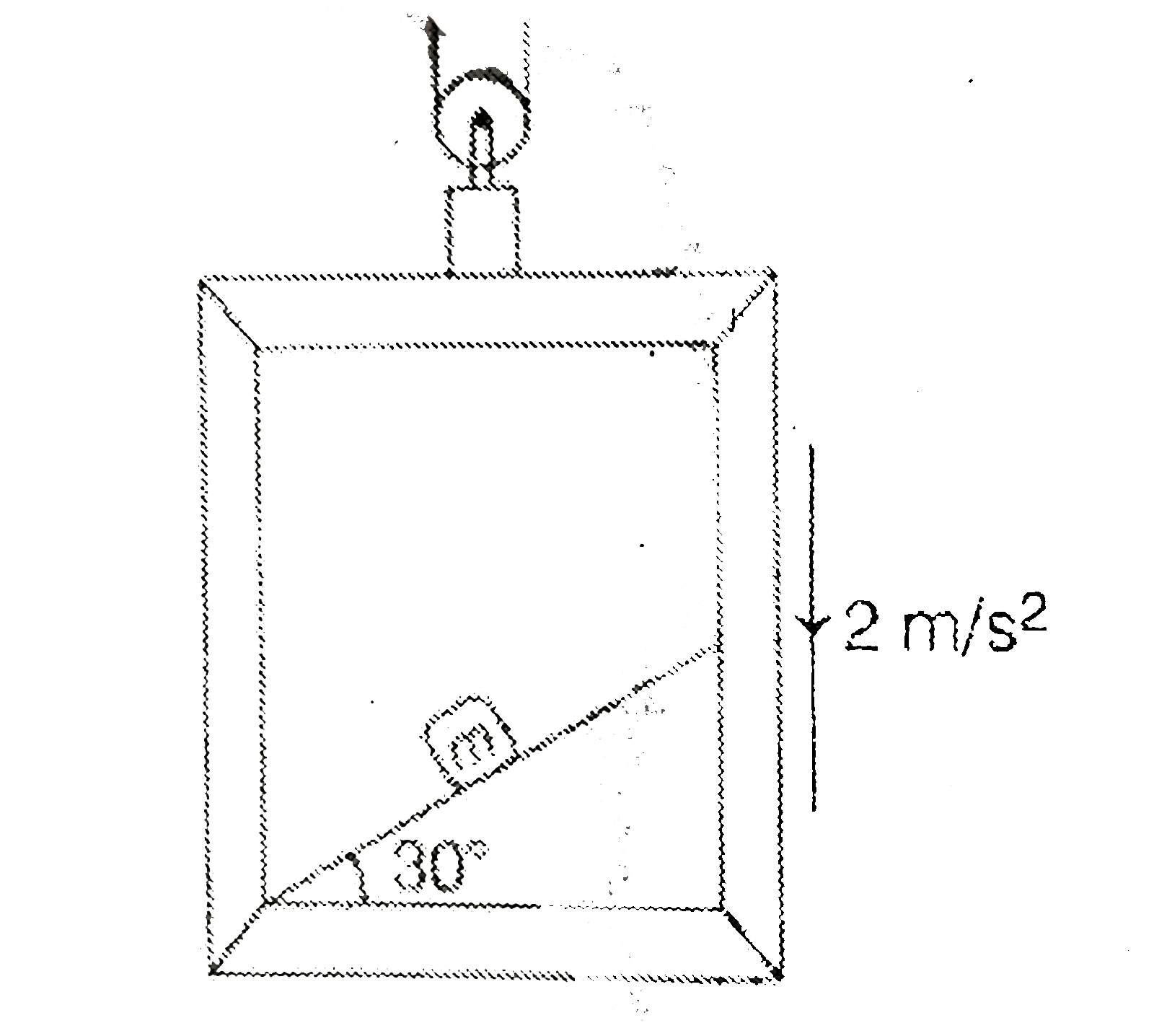 Aμ=1√3Bμ=0.4Cμ=0.8Dμ=0.5
Aμ=1√3Bμ=0.4Cμ=0.8Dμ=0.5
In the arrangement shown in figure, what should be the mass of block A so that the system remains at rest. Also find force exerted by string on the pulley Q.
(g=10m/s2)
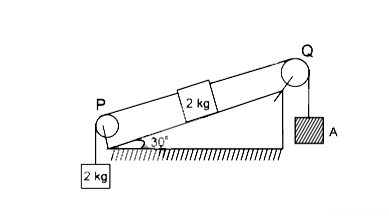
View SolutionIn the shown figure,a particle of mass M/10 strikes the block of mass M with velocity v0 and gets attached to it.For what velocity v0 (in ms−1 ),the block B just able to leave the ground? (Given,M=100gm,K=880N/m)
View SolutionA block of mass m is kept on an inclined plane of a lift moving down with acceleration of 2ms−1.What should be the coefficient of friction to let the block move down with constant velocity relative to lift.
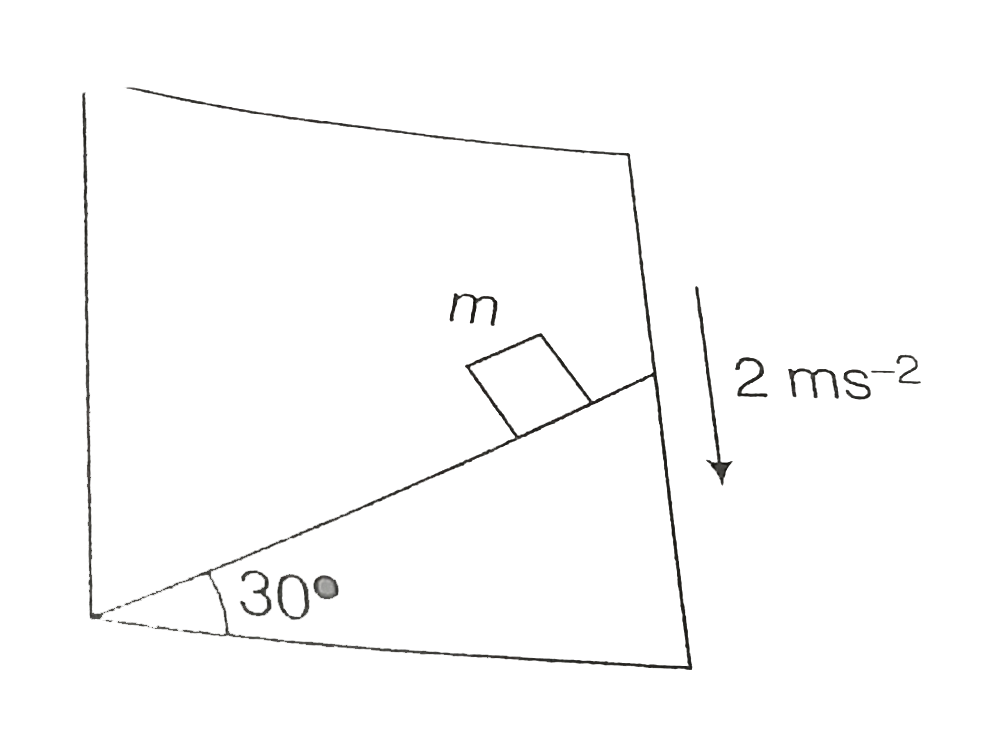
View SolutionBlock A of mass M in the system shown in the figure slides down the incline at a constant speed. The coefficient of friction between block A and the surface is 1 3 3 . The mass of block B is-

View SolutionA block slides down a rough inclined plane of slope angle θ with a constant velocity. It is then projected up the same plane with an initial velocity v. The distance travelled by the block up the plane before coming to rest is
View Solution

